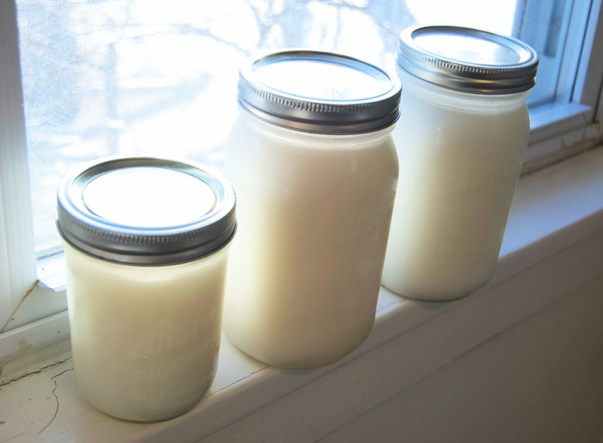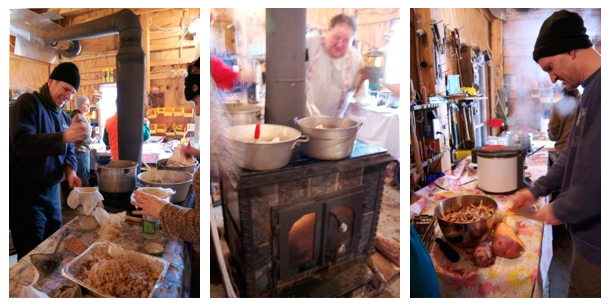
Rendering your own lard is a snap. Lard does wonderful things to food, making pastries flakey, deep fried foods crispy and sautés profoundly flavorful. But the most important component of good tasting lard is the source of the pork fat. Mine was from local, pastured pigs, which means those pigs roam and forage for much of their food, making their fat not only tasty, but high in vitamin E and Omega 3 fatty acids. This lard is nothing like commercial, shelf-stable blocks from the store. This fat is fresh, unctuous, delicious and quite healthful.
Last January I had the pleasure of attending the winter lard rendering at Snake River Farm Minnesota, near the small town of Becker. I had been looking for a local farm from which to source our beef and pork. Having grown up on a farm, I appreciate the quality and satisfaction that comes from raising and eating your own meat. Farmer Tom Barthel raises grass-fed bison, beef and pastured hogs at Snake River, selling them directly to consumers. I emailed Tom and he invited me to the farm to have a look during their annual lard rendering. He recommended that I bring a couple of mason jars so I could take some fresh lard home with me. Who can say no to that?
When we arrived at the picturesque farm, we were greeted by a team of horses ready to pull a sleigh. Inside their barn we found the lard rendering in full swing. Friends and family manned pots of ground pork fat that were gently melting on a big wood fired stove. As the lard liquified, it was ladled off into jars through some cheese cloth. When as much lard as possible was rendered, the remaining “cracklins” were fried until crisp and added to scrambled eggs for visitors, along with freshly deep fried doughnuts, french and sweet potato fries. I thought I’d died and gone to heaven. The lard is very clean tasting with just the barest hint of savoriness.
Needless to say we coveted our three jars of lard we took home. Below are very easy instructions for rendering lard at home. If you don’t have access to a local farm, check out your local butcher shop. They will know how to get leaf lard or back fat. Leaf lard is the interior fat on a hog that sits right by their kidneys. It’s unsaturated fat and is very soft, melting at low temps. Back fat is saturated and very hard, melting at higher temps. Most people suggest using leaf lard for pastries and breads and back fat lard for deep frying. Honestly, I’m not that picky. I’ll just take lard any way I can get it!

